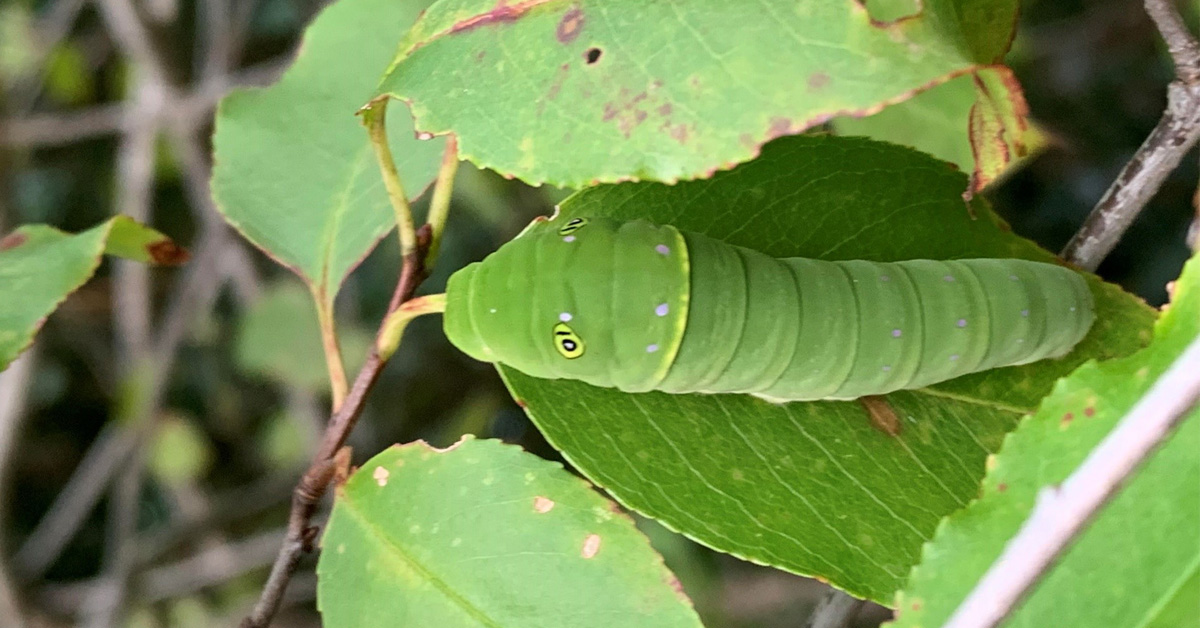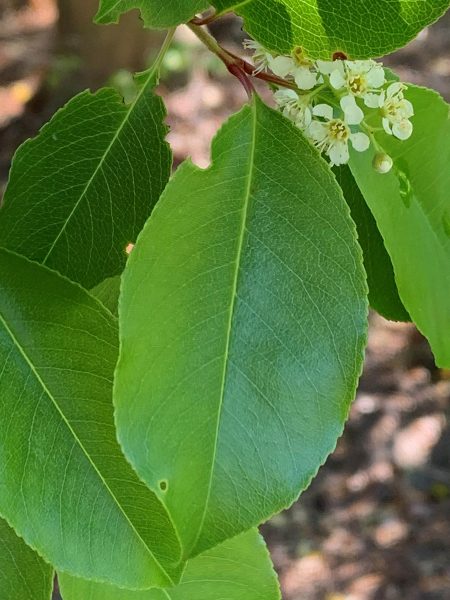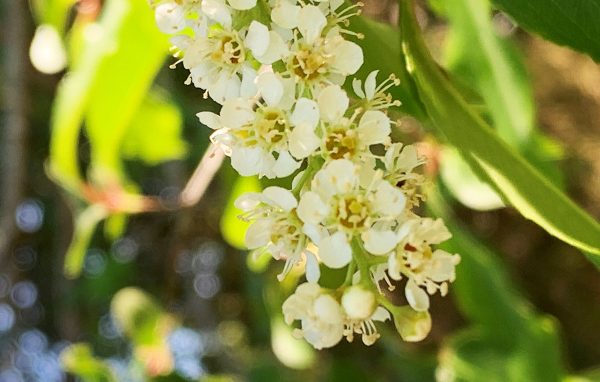
An Eastern tiger swallowtail caterpillar on black cherry leaves—native trees grow butterflies!
By Stephen Living/DWR
When we plan and plant our gardens and backyard habitats, we often focus on the beautiful native wildflowers that provide amazing color in addition to nectar for pollinators. But keep in mind that it’s just as important (and possibly more so) to make sure that we have the right kinds of native leaves and shoots for caterpillars and other larval insects to feed on while they grow. Flowers may feed butterflies, but leaves grow them!

Nibbling is good! Don’t fret when you see that something has been nibbling on your leaves. This is part of a healthy habitat and indicate that the plant or tree is supporting bugs that birds and other wildlife depend on.
One valuable native plant often overlooked is the black cherry (Prunus serotina). This plant is widespread throughout Virginia and may already be in your yard. This small- to medium-sized tree grows relatively fast and can usually be found on forest edges as an understory tree. Clusters of small white flowers are opening in early spring and attract pollinators like flies and bees.

These will develop into small black fruits that are eaten by many species including songbirds and mammals. Birds easily spread the seeds and it isn’t uncommon to find this growing in naturalized edges and borders in the home landscape.

Black cherry and closely related species are especially important host plants that support as many as 456 species of butterflies and moths. This includes the impressive and beautiful Eastern tiger swallowtail butterfly, Virginia’s state insect, and others like the red-spotted purple butterfly. Encourage that black cherry in your yard and you can help Restore the Wild!
Find more about how you can support Virginia’s wildlife at your home in Habitat at Home.



